Unveiling the Zodiac: Astrological Symbolism in Leonardo da Vinci’s The Last Supper. Heavenly Bodies in The Last Supper: A Zodiacal Analysis of Leonardo’s Masterpiece
The Last Supper by Leonardo da Vinci stands as one of the most recognized masterpieces in the world. Its artistic splendor, coupled with the profound spiritual narrative it encapsulates, continues to captivate audiences centuries after its creation. But there is more to the famous painting than meets the eye. A fascinating dimension of this artwork lies in a theory that suggests a hidden correlation between the depicted apostles and the zodiac signs.
Table 1: The Apostles and Their Corresponding Zodiac Signs
| Apostle | Zodiac Sign |
|---|---|
| St. Peter | Aries |
| St. John | Taurus |
| St. Matthew | Gemini |
| St. Thomas | Cancer |
| St. James the Greater | Leo |
| St. Philip | Virgo |
| St. Bartholomew | Libra |
| Judas Iscariot | Scorpio |
| St. Simon | Sagittarius |
| St. James the Lesser | Capricorn |
| St. Andrew | Aquarius |
| St. Thaddeus (Jude) | Pisces |
This idea asserts that each apostle’s disposition, actions, and statements in the Bible align with the traits and characteristics assigned to their respective zodiac signs. Such a correlation can offer a new perspective on understanding the individual apostles’ roles in the biblical narrative.
As we embark on this exploration, we’ll be delving into each apostle’s life, biblical accounts, and purported zodiac counterparts. By drawing parallels between the zodiac signs and the apostles, we aim to highlight how these celestial symbols influenced the depiction of these biblical figures in da Vinci’s The Last Supper.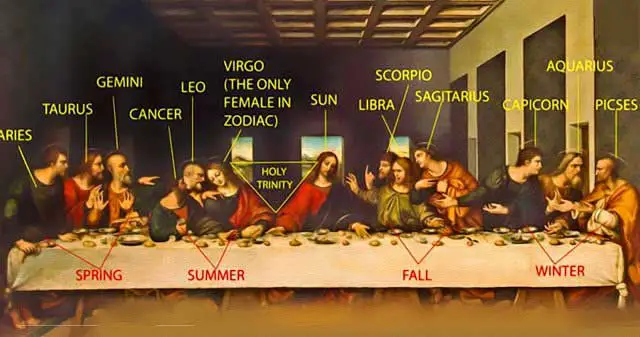
Our quest will take us from Aries’ boldness embodied in St. Peter to the compassionate nature of Pisces reflected in St. Thaddeus. By the end of this epic journey, we hope to bring a unique astrological lens to this iconic masterpiece, revealing an unseen layer of complexity and beauty within its divine narrative. Let’s journey through the stars and scripture, discovering the apostles in celestial light.
Aries – St. Peter
In Leonardo da Vinci’s The Last Supper, St. Peter is depicted to the right of Christ, caught in a moment of passionate discourse. His position in the painting and his gestural language suggest a figure of immense determination and courage, qualities often attributed to the fiery Aries.
Table 2: Aries Traits and St. Peter’s Characteristic Actions
| Aries Traits | St. Peter’s Characteristic Actions |
|---|---|
| Courageous | St. Peter was one of the greatest and first disciples to acknowledge Jesus as the Messiah. |
| Determined | Despite the risks, he followed Jesus, demonstrating his resolve. |
| Enthusiastic | His sincere faith led him to walk on water toward Jesus. |
| Passionate | He zealously cut off the ear of a servant of the high priest in defense of Jesus. |
A closer look at St. Peter’s life reveals a figure synonymous with the idealism of Aries. St. Peter, originally named Simon, was a fisherman by trade before Jesus called upon him to become a „fisher of men.“ The transition from a simple fisherman to the foundation of the early Christian Church encapsulates the Aries’ spirit of initiation and pioneering. Despite the uncertainty, his willingness to embark on this spiritual journey reflects the Aries trait of fearlessly diving into the unknown.
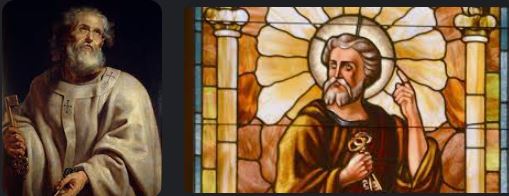 St. Peter’s statements in the Bible further exemplify his Aries attributes. A notable example is when he proclaimed, „You are the Christ, the own Son of the living God“ (Matthew 16:16). Despite potential reprisal, this bold declaration aligns with the Aries persona of standing up for what they believe in, even when facing adversity.
St. Peter’s statements in the Bible further exemplify his Aries attributes. A notable example is when he proclaimed, „You are the Christ, the own Son of the living God“ (Matthew 16:16). Despite potential reprisal, this bold declaration aligns with the Aries persona of standing up for what they believe in, even when facing adversity.
In essence, St. Peter’s representation in The Last Supper and his biblical narrative reflect the Aries’ spirit – pioneering, courageous, and full of conviction. St. Peter’s portrayal sets a compelling precedent for this astrological exploration as we delve deeper into the painting and the zodiac signs.
Taurus – St. John
In Leonardo da Vinci’s The Last Supper, St. John is depicted to the right of Jesus, an intimate position signifying his deep relationship with Christ. His serene demeanor and gentle gestures express a sense of calm and stability often associated with the earth sign Taurus.
| Taurus Traits | St. John’s Characteristic Actions |
|---|---|
| Reliable | St. John was one of the most dedicated disciples, remaining with Jesus during His crucifixion. |
| Stable | He was the one to whom Jesus entrusted the care His mother, Mary, indicating his stable nature. |
| Devoted | St. John was renowned for his unwavering devotion to Jesus and his teachings. |
| Practical | As evidenced in his writings, St. John consistently applied Jesus’s teachings in practical ways. |
St. John’s life showcases a great alignment with the rational worldview characteristic of Taurus. As the author of the spiritual Gospel of John, three great epistles, and the book of Revelation, his writings showcase a practical approach to spirituality. His teachings often emphasize the tangible expressions of faith, such as love and kindness towards others, mirroring the Taurus trait of grounding their ideals in reality.
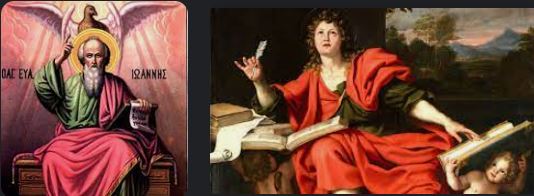 His statements in the scriptures further underline his Taurus nature. In one of his letters, he wrote, „Let us not love with words or simple speech but with true actions and in truth“ (1 John 3:18). This assertion reflects the Taurus’ penchant for action over words and their desire for authenticity and truth.
His statements in the scriptures further underline his Taurus nature. In one of his letters, he wrote, „Let us not love with words or simple speech but with true actions and in truth“ (1 John 3:18). This assertion reflects the Taurus’ penchant for action over words and their desire for authenticity and truth.
In conclusion, St. John’s representation in The Last Supper, scriptural contributions, and personal narrative all bear the unmistakable imprint of Taurus traits – reliability, stability, devotion, and practicality. As we continue to traverse the zodiac and the apostles’ representations, we find the astrological symbols not only enhancing our understanding of these historical figures but also deepening our appreciation for da Vinci’s masterpiece.
Gemini – St. Matthew
In The Last Supper, St. Matthew is positioned to the left of St. Thomas. He is characterized by an active, questioning posture, leaning towards St. John for a discussion. These characteristics align with the astrological sign of Gemini, known for its intellectual curiosity and communicative abilities.
| Gemini Traits | St. Matthew’s Characteristic Actions |
|---|---|
| Intellectual Curiosity | As a tax collector, Matthew would have been skilled in record-keeping and accounting, requiring a keen intellect and curiosity for detail. |
| Communicative | His Gospel is an extensive account of Jesus’ life, showcasing Matthew’s ability to communicate complex spiritual ideas. |
| Adaptable | Matthew’s transformation from a tax collector to a disciple of Jesus displays his adaptability, a key Gemini trait. |
| Social | His decision to hold a feast for Jesus at his house, attended by many tax collectors and sinners (Matthew 9:10), underscores his sociable nature. |
St. Matthew’s worldview can be perceived through the lens of mathematism, a philosophical view that prioritizes logical reasoning and numerical analysis. In his Gospel, Matthew often provides detailed accounts of events, such as the famous Sermon on the Mount and Jesus’ genealogy, which hint at a systematic, logical approach to understanding the world and faith – a feature resonating with the analytical nature of Gemini.
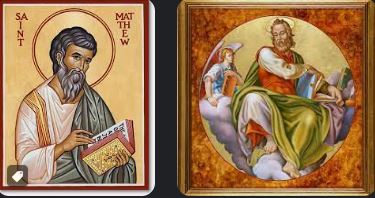 Moreover, his statements in the scriptures often reflect Gemini’s attributes. For example, in Matthew 7:7, he quotes Jesus, „Ask and it will be surely given to you; seek around, and you will find; knock and the closed door will be opened to you.“ This verse showcases the Gemini’s natural curiosity and their pursuit of knowledge.
Moreover, his statements in the scriptures often reflect Gemini’s attributes. For example, in Matthew 7:7, he quotes Jesus, „Ask and it will be surely given to you; seek around, and you will find; knock and the closed door will be opened to you.“ This verse showcases the Gemini’s natural curiosity and their pursuit of knowledge.
Hence, St. Matthew’s position in the painting, actions, and writings all subtly align with the characteristics of Gemini. His intellectual curiosity, communicative abilities, adaptability, and social nature embody the essence of this astrological sign. As we journey through the zodiac, we continue to uncover the fascinating parallels between the apostles and their corresponding zodiac signs in The Last Supper.
Cancer – St. Thomas
St. Thomas is positioned to the immediate left of St. Matthew in The Last Supper painting. His upward-pointing finger suggests a questioning or probing nature, which resonates with the reflective and intuitive qualities of the Cancer sign.
| Cancer Traits | St. Thomas’s Characteristic Actions |
|---|---|
| Intuitive | Thomas is known for his doubt about Jesus’ resurrection until he personally could see and touch Jesus’ wounds (John 20:25), showing his reliance on intuition and tangible evidence. |
| Cautious | His initial disbelief about Jesus’ resurrection also highlights his cautious nature, a typical Cancer trait. |
| Loyal | Despite his doubts, Thomas remained loyal to Jesus, even proposing to die with him (John 11:16). |
| Emotional | Thomas’s intense reaction to Jesus’ crucifixion and resurrection demonstrates a deep emotional connection, a characteristic of Cancer. |
St. Thomas’s worldview leans towards materialism, emphasizing the importance of physical and tangible reality. This worldview is apparent in his insistence on seeing and touching Jesus’ wounds before believing in his resurrection (John 20:27). This aligns with the Cancer sign’s emphasis on security and their need for tangible, concrete evidence.
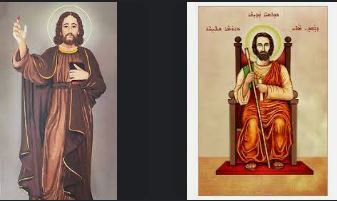 Thomas’s statements throughout the scriptures also reflect Cancer’s attributes. His declaration in John 20:28, „My Lord and my God!“ once he witnessed Jesus’ wounds, reveals the deep emotional intensity that Cancers are known for. This intense reaction, only after he received tangible proof of Jesus’ resurrection, further underscores the connection between St. Thomas and the Cancer zodiac sign.
Thomas’s statements throughout the scriptures also reflect Cancer’s attributes. His declaration in John 20:28, „My Lord and my God!“ once he witnessed Jesus’ wounds, reveals the deep emotional intensity that Cancers are known for. This intense reaction, only after he received tangible proof of Jesus’ resurrection, further underscores the connection between St. Thomas and the Cancer zodiac sign.
As such, St. Thomas’s position in the painting, actions, and statements all subtly echo the characteristics of the Cancer sign. His intuitive, cautious, loyal, and emotional nature embodies the essence of this astrological sign, adding another layer of depth to our exploration of The Last Supper and its astrological implications.
Leo – St. James the Greater
St. James the Greater holds a prominent place in the painting, sitting to the right of Christ, his face reflecting the light from the central figure. This strategic position aligns with the Leo sign’s love for the spotlight and its natural leadership abilities.
| Leo Traits | St. James the Greater’s Characteristic Actions |
|---|---|
| Courageous | St. James was one of the first disciples to suffer martyrdom, demonstrating his courageous nature, a characteristic of Leo. |
| Loyal | His unwavering loyalty to Jesus, even to the point of death, aligns with the Leo trait of loyalty. |
| Natural Leader | He was one of the men first to be called by Jesus. He was part of Jesus’ inner circle, indicating his natural leadership abilities, a typical Leo trait. |
| Passionate | St. James’s willingness to suffer for his beliefs reflects the passion that is characteristic of Leos. |
St. James the Greater’s worldview is represented by sensualism, a philosophy emphasizing sensory experience’s importance. It aligns with the Leo sign’s penchant for a lavish and comfortable lifestyle, appreciating the finer things in life that please their senses.
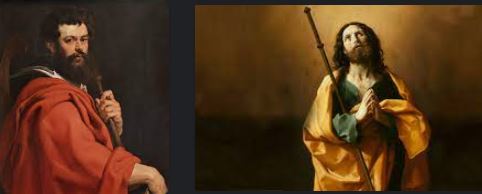 St. James’s statements in the scriptures reflect Leo’s attributes. In Mark 10:39, James confidently asserts that he can drink from the same cup as Jesus, symbolizing his readiness to face the same trials. This bold assertion, indicative of Leo’s courage and self-assured nature, demonstrates his willingness to step into the limelight, even in adversity.
St. James’s statements in the scriptures reflect Leo’s attributes. In Mark 10:39, James confidently asserts that he can drink from the same cup as Jesus, symbolizing his readiness to face the same trials. This bold assertion, indicative of Leo’s courage and self-assured nature, demonstrates his willingness to step into the limelight, even in adversity.
Thus, St. James the Greater’s position in the painting, his characteristic actions, and his statements subtly mirror the traits of the Leo sign. His courage, loyalty, leadership, and passion align perfectly with this fire sign, further enhancing our understanding of the astrological undertones of The Last Supper.
Virgo – St. Philip
In The Last Supper, St. Philip occupies an intriguing place, standing second from the left, and his hands are outstretched in an inquiry into the divine. This posture mirrors the Virgo sign’s quest for knowledge, analytical mindset, and need for understanding.
| Virgo Traits | St. Philip’s Characteristic Actions |
|---|---|
| Analytical | St. Philip is often depicted asking questions, showcasing his analytical nature which resonates with Virgo traits. |
| Loyal | Known for his unwavering loyalty to Christ, St. Philip embodies Virgo’s steadfast loyalty. |
| Hardworking | His dedication to spreading the teachings of Christ reflects the hardworking aspect of Virgos. |
| Practical | St. Philip’s practical approach to problems, as seen in John 6:7, aligns with the practical nature of Virgos. |
The worldview of St. Philip can be characterized by phenomenalism, which posits that physical objects do not exist as real things in themselves but only as perceptual phenomena. This notion parallels the Virgo sign’s bias for analysis and focuses on observable phenomena.
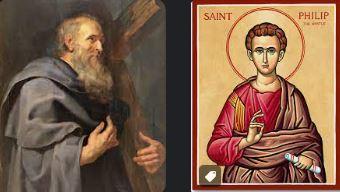 St. Philip’s statements in the scriptures echo Virgo’s attributes. His question in John 14:8, „Lord, show us the Father, and it will be quite enough for us,“ demonstrates his desire for direct, tangible proof, which mirrors Virgos’s practical, detail-oriented nature.
St. Philip’s statements in the scriptures echo Virgo’s attributes. His question in John 14:8, „Lord, show us the Father, and it will be quite enough for us,“ demonstrates his desire for direct, tangible proof, which mirrors Virgos’s practical, detail-oriented nature.
In summary, the position of St. Philip in the painting, his traits, and his statements subtly reflect the attributes of the Virgo sign. His analytical mind, loyalty, hard work, practicality, and phenomenalist worldview align with Virgo’s essence, providing a more profound comprehension of Leonardo’s The Last Supper.
Libra – St. Bartholomew
In The Last Supper, St. Bartholomew, the apostle associated with Libra, is located at the far left end of the table. His position, slightly separated from the core group, echoes Libra’s striving for balance and impartiality.
| Libra Traits | St. Bartholomew’s Characteristic Actions |
|---|---|
| Diplomatic | St. Bartholomew’s reputation as a peacemaker among the apostles echoes Libra’s diplomatic nature. |
| Gracious | Known for his graciousness, St. Bartholomew resonates with the Libra trait of grace and charm. |
| Fair-minded | His pursuit of fairness and justice, as reflected in his teachings, aligns with Libra’s fair-mindedness. |
| Social | As a missionary, St. Bartholomew’s social interactions reflect the Libra trait of sociability. |
St. Bartholomew’s worldview leans towards realism, the belief in the existence of reality independently of our perception. It correlates with Libra’s desire for balance and harmony, often derived from accepting reality as it is.
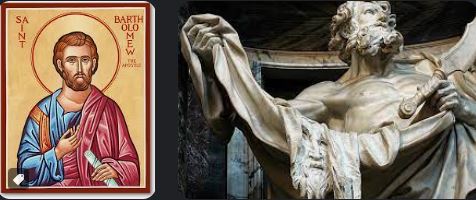 The statements of St. Bartholomew, though limited in the scriptures, portray him as a figure embodying the attributes of Libra. His inquiries in the gospels indicate a desire for justice and fairness, elements that align seamlessly with the Libra sign.
The statements of St. Bartholomew, though limited in the scriptures, portray him as a figure embodying the attributes of Libra. His inquiries in the gospels indicate a desire for justice and fairness, elements that align seamlessly with the Libra sign.
To conclude this section, St. Bartholomew’s position in the painting, character traits, and statements, when analyzed through the lens of the Libra sign, provide a fascinating perspective on the multi-layered narrative woven into Leonardo’s The Last Supper. His realistic worldview, his pursuit of fairness, and his social and diplomatic nature are all components that resonate with the Libra sign, further enriching our understanding of this iconic masterpiece.
Scorpio – St. Judas Iscariot
At the moment captured by Leonardo’s The Last Supper, Judas Iscariot, who represents Scorpio, occupies a position of notoriety and intrigue. He is seated to the right of Jesus, partially obscured in shadow, which is a striking visual representation of Scorpio’s association with secrecy and hidden truths.
| Scorpio Traits | Judas Iscariot’s Characteristic Actions |
|---|---|
| Resourceful | Judas Iscariot’s infamous decision to betray Jesus for thirty pieces of silver showcases his resourcefulness in a grim context. |
| Brave | Despite the negative implications, it takes a certain level of bravery to act against the group, indicating Judas Iscariot’s alignment with Scorpio’s courage. |
| Passionate | Judas Iscariot’s actions, driven by a complex mix of motives, can be interpreted as a manifestation of Scorpio’s intense passion. |
| Mysterious | Judas Iscariot’s motives and inner thoughts remain largely unknown, resonating with the mysterious aspect of the Scorpio sign. |
Judas Iscariot’s worldview can be associated with dynamism, which emphasizes change and motion. This worldview encapsulates the transformative energy of Scorpio. Judas Iscariot, whether due to misguided intentions or a prophetic role, sets the wheels of change in motion, leading to the crucifixion and resurrection of Christ.
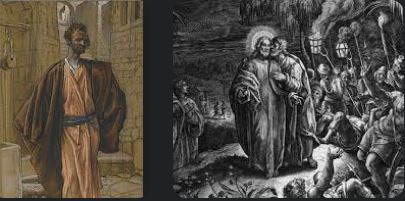 Judas Iscariot’s statements, especially his query, „Is it I, Rabbi?“ when Jesus predicts his betrayal, reflect Scorpio’s depth and complexity. While seemingly simple, this question carries layers of possible meaning and subtext, perfectly illustrating Scorpio’s multi-faceted nature.
Judas Iscariot’s statements, especially his query, „Is it I, Rabbi?“ when Jesus predicts his betrayal, reflect Scorpio’s depth and complexity. While seemingly simple, this question carries layers of possible meaning and subtext, perfectly illustrating Scorpio’s multi-faceted nature.
In sum, Judas Iscariot’s position in the painting, character traits, and statements provide a compelling interpretation when viewed through the prism of the Scorpio sign. The dynamism of his worldview, resourcefulness, bravery, passion, and mystery aligns with the Scorpio attributes, providing a deeper understanding of this character in the narrative of The Last Supper.
Sagittarius – St. Simon
Occupying a distinct position in the tableau of The Last Supper, St. Simon, who embodies the zodiac sign of Sagittarius, is placed on the rightmost side of the painting. The placement gives him an aura of independence and isolation, reflecting Sagittarius’s love for freedom and space.
| Sagittarius Traits | St. Simon’s Characteristic Actions |
|---|---|
| Idealistic | St. Simon, often portrayed as the ‘Zealot,’ displays idealistic fervor in his devotion to Jesus, reflecting the Sagittarian idealism. |
| Curious | His quest for a deeper understanding of Jesus’ teachings is a testament to the Sagittarian spirit of curiosity. |
| Adventurous | St. Simon’s decision to follow Jesus, despite the inherent risks, highlights his adventurous spirit, a key Sagittarius trait. |
| Open-minded | Simon’s open-mindedness is evident in his acceptance of Jesus’ radical teachings, aligning with Sagittarius’s openness to new ideas. |
St. Simon’s worldview reflects monadism, the philosophy that sees the world as composed of many individual, unique entities or „monads.“ This philosophy aligns with the Sagittarian principle of individuality and their propensity to view the world as a vast expanse filled with infinite possibilities and myriad individual experiences.
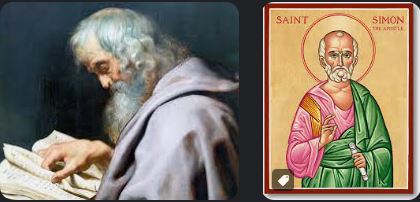 The statements made by St. Simon in biblical accounts, such as his unwavering profession of faith in Jesus, resonate with the Sagittarian attributes of optimism and forward-thinking. These statements reflect a future-oriented mindset and a positive outlook, both hallmarks of the Sagittarius sign.
The statements made by St. Simon in biblical accounts, such as his unwavering profession of faith in Jesus, resonate with the Sagittarian attributes of optimism and forward-thinking. These statements reflect a future-oriented mindset and a positive outlook, both hallmarks of the Sagittarius sign.
In summary, St. Simon’s position in the painting, character traits, and statements all provide a rich interpretation when viewed through the lens of the Sagittarius sign. His monadic worldview, idealism, curiosity, adventurous spirit, and open-mindedness align perfectly with Sagittarian attributes, offering a deeper understanding of his character within the grand narrative of The Last Supper.
Capricorn – St. James the Lesser
In the intricate composition of The Last Supper, St. James the Lesser assumes an understated role. Seated to the left of Jesus, his humble position in the painting reflects his persona and aligns with the attributes of Capricorn, known for their modesty and discipline.
| Capricorn Traits | St. James the Lesser’s Characteristic Actions |
|---|---|
| Disciplined | The diligence and dedication with which St. James followed Jesus’ teachings mirror the disciplined nature of a Capricorn. |
| Responsible | His responsible attitude is evident in his commitment to spreading the Gospel, aligning with the Capricorn’s sense of duty. |
| Self-Controlled | St. James the Lesser’s self-control is visible in his measured response to the events of The Last Supper, reflecting the Capricorn trait of emotional control. |
| Practical | His practical approach to spreading the teachings of Jesus aligns with the pragmatic and realistic approach typical of a Capricorn. |
St. James the Lesser’s worldview, heavily inclined towards spiritualism, is entirely compatible with the Capricorn sign. Spiritualism, emphasizing the inherent value and importance of the spiritual over the material, echoes Capricorn’s emphasis on the internal and the authentic.
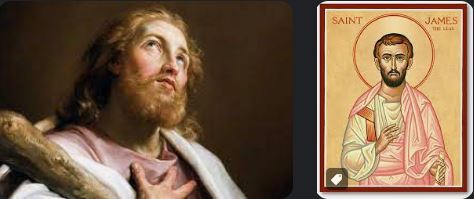 St. James’s recorded statements, especially his unwavering affirmation of faith in the face of adversity, resonate with the steadfast and resilient nature of Capricorn. His dedication to his spiritual path, acceptance of responsibility, and perseverance in times of trials all reflect the Capricorn’s strength of character.
St. James’s recorded statements, especially his unwavering affirmation of faith in the face of adversity, resonate with the steadfast and resilient nature of Capricorn. His dedication to his spiritual path, acceptance of responsibility, and perseverance in times of trials all reflect the Capricorn’s strength of character.
In summary, the position of St. James the Lesser in the painting, his actions, and his spiritualistic worldview all combine to represent the Capricorn zodiac sign. His disciplined, responsible, self-controlled, and practical nature, coupled with his solid spiritual orientation, beautifully encapsulates the essence of a Capricorn, providing a more prosperous and deeper understanding of his character within the context of The Last Supper.
Aquarius – St. Andrew
St. Andrew, portrayed in The Last Supper, is situated to the right side of Jesus, holding an esteemed position within the painting. His placement and demeanor in the artwork compellingly allude to the characteristics of the Aquarius zodiac sign.
| Aquarius Traits | St. Andrew’s Characteristic Actions |
|---|---|
| Independent | St. Andrew’s decision to follow Jesus, departing from his former life as a fisherman, showcases his independent mindset. |
| Progressive | His forward-thinking actions, including the spread of the Gospel, align with the progressive nature of an Aquarius. |
| Humanitarian | His dedication to helping others, as portrayed in biblical accounts, mirrors the humanitarian spirit of Aquarius. |
| Deep Thinker | St. Andrew’s thoughtful dialogue and insightful questions during The Last Supper demonstrate the deep thinking attribute of an Aquarius. |
St. Andrew’s worldview, steeped in pneumatism, closely aligns with the Aquarian ethos. Pneumatism, a belief system that posits the spirit as the most significant element of reality, is analogous to the Aquarian tendency to value the abstract, the intangible, and the innovative.
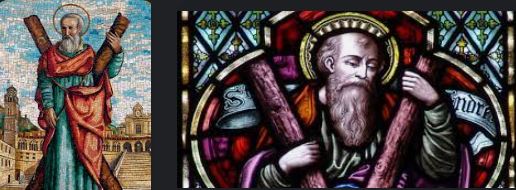 Furthermore, St. Andrew’s statements and actions often reflect the qualities of an Aquarius. His teachings emphasized the spirit’s power and importance, embodying the humanitarian and progressive essence of the Aquarius sign. His readiness to embrace new ideas and his deep-seated desire for spiritual advancement resonate with the Aquarian penchant for forward-thinking and their commitment to an enlightened worldview.
Furthermore, St. Andrew’s statements and actions often reflect the qualities of an Aquarius. His teachings emphasized the spirit’s power and importance, embodying the humanitarian and progressive essence of the Aquarius sign. His readiness to embrace new ideas and his deep-seated desire for spiritual advancement resonate with the Aquarian penchant for forward-thinking and their commitment to an enlightened worldview.
In sum, St. Andrew’s position in the painting, character traits and actions, and pneumatistic worldview all converge to portray the essence of the Aquarius zodiac sign. His independence, progressiveness, humanitarianism, and depth of thought, combined with a strong emphasis on spiritual matters, provide a comprehensive understanding of his character in the context of The Last Supper.
Pisces – St. Thaddeus (Jude)
St. Thaddeus, also known as Jude, is important in The Last Supper. Situated towards the right of the painting, he is depicted in a state of surprise, as if taken aback by the revelation made by Jesus.
| Pisces Traits | St. Thaddeus’s Characteristic Actions |
|---|---|
| Compassionate | St. Thaddeus, as per biblical accounts, was known for his compassionate nature, often expressed through his letters encouraging faith and love among believers. |
| Intuitive | His intuitive understanding of spiritual matters, as shown in his writings, aligns with the intuitive trait of a Pisces. |
| Wise | His wisdom is evident in his teachings and his dedicated service to the Christian community. |
| Artistic | Though not explicitly mentioned, his articulate writings suggest a sense of artistic flair, a common Pisces trait. |
St. Thaddeus’s worldview is closely associated with psychism, a philosophical approach that emphasizes the significance of the mind or soul in understanding the world. This worldview is in harmony with the Pisces sign, known for its deep emotional and spiritual understanding.
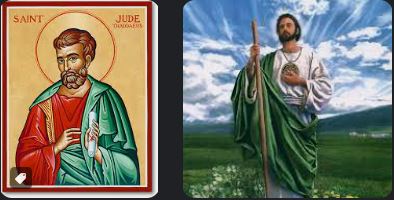 St. Thaddeus’s statements and actions often echo the attributes of the Pisces sign. His teachings are imbued with compassion and wisdom, mirroring the Pisces traits of empathy and intuition. Furthermore, his writings, rich with spiritual insights, demonstrate a deep understanding of the human psyche, reflecting the Piscean tendency to perceive the world through a spiritual and emotional lens.
St. Thaddeus’s statements and actions often echo the attributes of the Pisces sign. His teachings are imbued with compassion and wisdom, mirroring the Pisces traits of empathy and intuition. Furthermore, his writings, rich with spiritual insights, demonstrate a deep understanding of the human psyche, reflecting the Piscean tendency to perceive the world through a spiritual and emotional lens.
In conclusion, St. Thaddeus‘s depiction in the painting, his character traits, and his psychism-influenced worldview collectively capture the essence of the Pisces zodiac sign. His compassionate and intuitive nature, wisdom, and potential artistic flair provide a comprehensive depiction of his character within the context of The Last Supper.
Conclusion
In the grandeur of The Last Supper, the intricate weaving of apostolic and zodiacal symbolism adds a deep layer of depth to the narrative. Each apostle, in their unique character traits and worldviews, vividly corresponds to the attributes of their respective zodiac signs. From Aries’ fiery leadership embodied in Peter to the compassionate and intuitive Pisces reflected in St. Thaddeus, the painting encapsulates a celestial tableau within its religious context.
This symbolic intertwining enhances the painting’s significance within Christian symbolism, suggesting a possible attempt by Leonardo to bridge the earthly and the divine. It could manifest the Renaissance spirit of harmonizing different knowledge systems – in this case, Christian theology and astrology.
This analysis not only provides a fresh perspective on The Last Supper but also invites viewers to delve deeper into the intricacies of its composition and themes. Understanding the potential astrological underpinnings adds a new dimension to appreciating the artwork and its profound resonance.
References:
- Leonardo da Vinci: Flights of the Mind. A book by Charles Nicholl
- Leonardo and the Last Supper by Ross King. Books in Amazon

Маргарита Алексиева е утвърден редактор в здравните и техническите рубрики на множество национални и регионални всекидневници и седмични издания. Завършила е медицинска техника в ТУ. С над 30-годишен опит в журналистиката, кариерата ѝ започва през 1992 г. През последното десетилетие тя се специализира предимно в областите на здравеопазването, медицината, техниката и актуалните новини в сферата на общественото здраве.
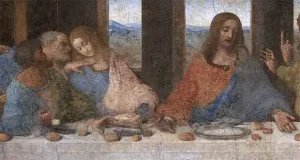
This gives a new depth to the painting. It’s fascinating to see how the apostles’ expressions and actions could correspond to their zodiac traits.
Fantastic analysis. It’s worth noting that astrology was a respected field during the Renaissance and not considered incompatible with Christianity.
Intriguing perspective, but it feels a bit far-fetched. The Church saw Astrology as heresy, and it would have been risky for Leonardo to include such symbolism.
Great article! I’ve always admired Leonardo’s attention to detail. It’s incredible to think he incorporated zodiac signs into his work
Interesting read! However, it’s important to mention that some scholars see these connections as coincidental rather than intentional
I disagree with the interpretation that the painting symbolizes the zodiac. Instead, some scholars suggest that the painting represents the twelve tribes of Israel. The placement of the figures and the symbolism of the bread and wine could be interpreted as a reference to the Passover meal, an important religious ritual in Jewish culture.
The descriptions of how each biblical character correlate to an astrological sign in this think piece do not match up with their indicated placements on the painting. It just, out right, doesn’t match up.
I disagree that the painting represents the Church’s hierarchy. Instead, some scholars suggest that the painting represents the symmetry and order of the universe. The placement of the figures on either side of Jesus could represent the harmony of the cosmos.
I disagree with the claim that Jesus represents the sun. Some art historians argue that Jesus represents the shape of a cross. They point out that placing Jesus’s arms and the bread on the table creates a cross shape, which could be interpreted as a religious symbol.
I don’t agree with the statement that the painting has survived for centuries. The painting has faced significant damage over the years, including damage from bombing during World War II. The restoration efforts were extensive, and some art historians argue that the painting has lost some of its original luster and color due to the restoration.
I disagree with the claim that the apostles’ zodiac signs represent the four yearly seasons. Some art historians believe that each group of three apostles represents the three primary colors of the color wheel – red, yellow, and blue. This theory suggests that Leonardo was not only a master of perspective and composition but also of color theory.